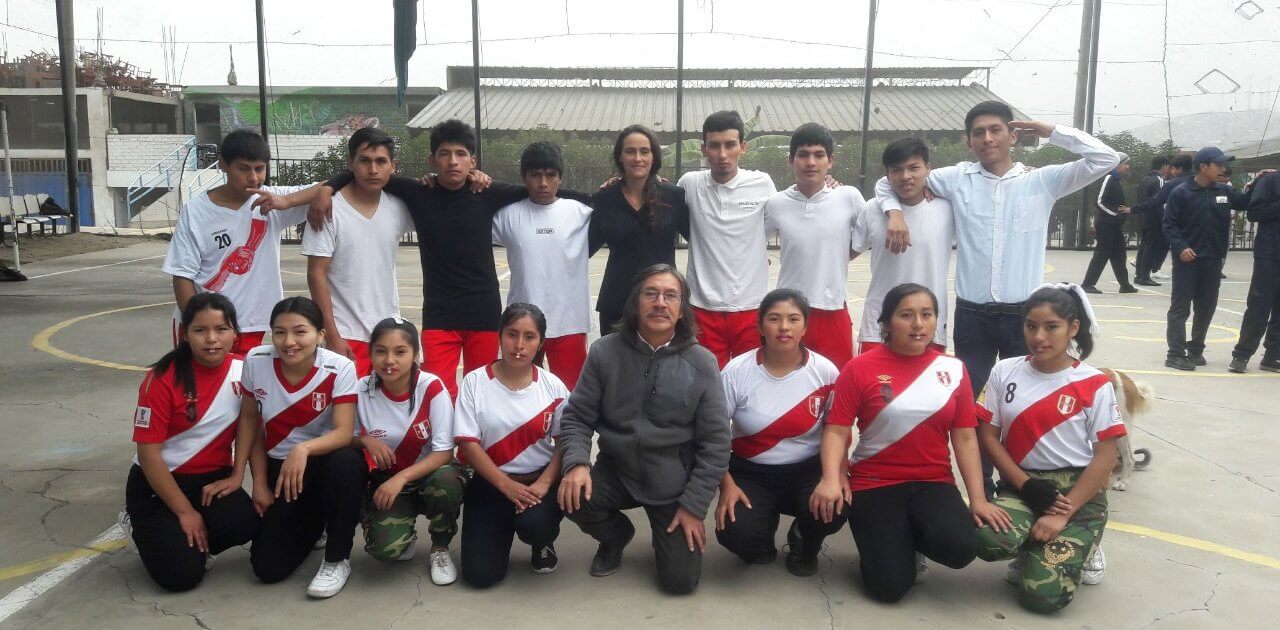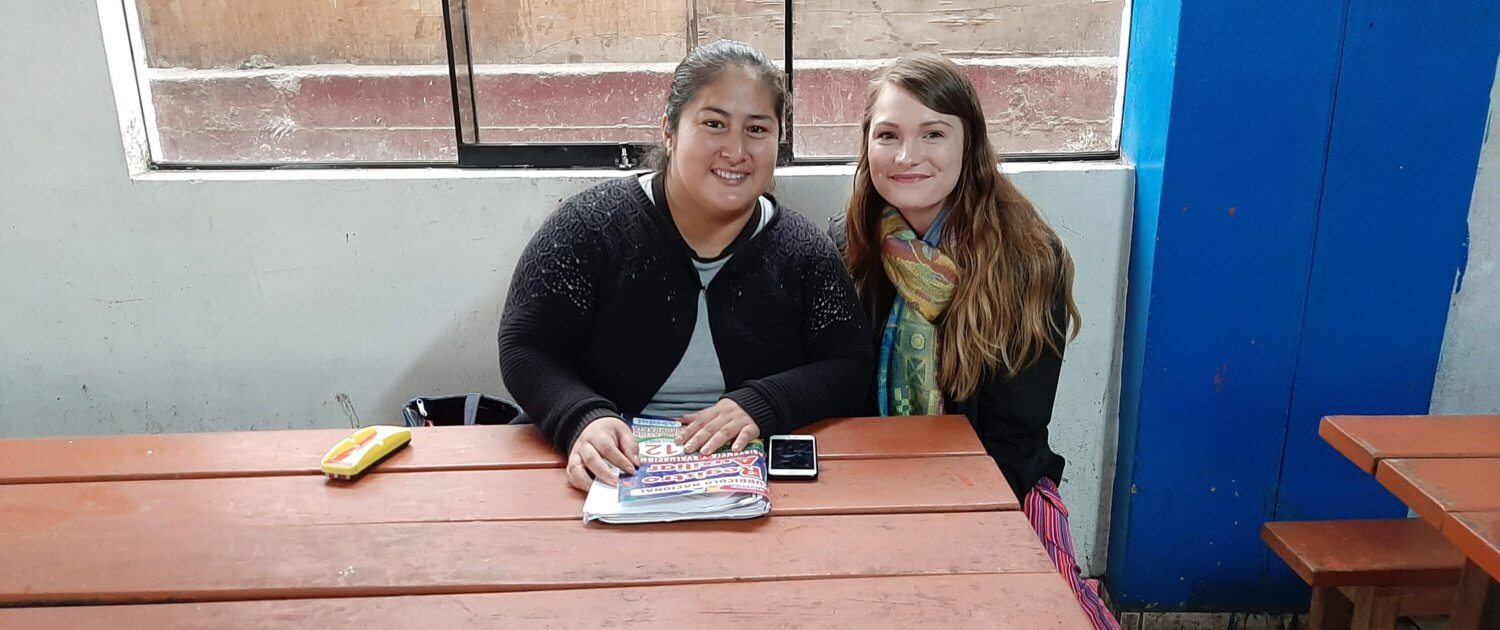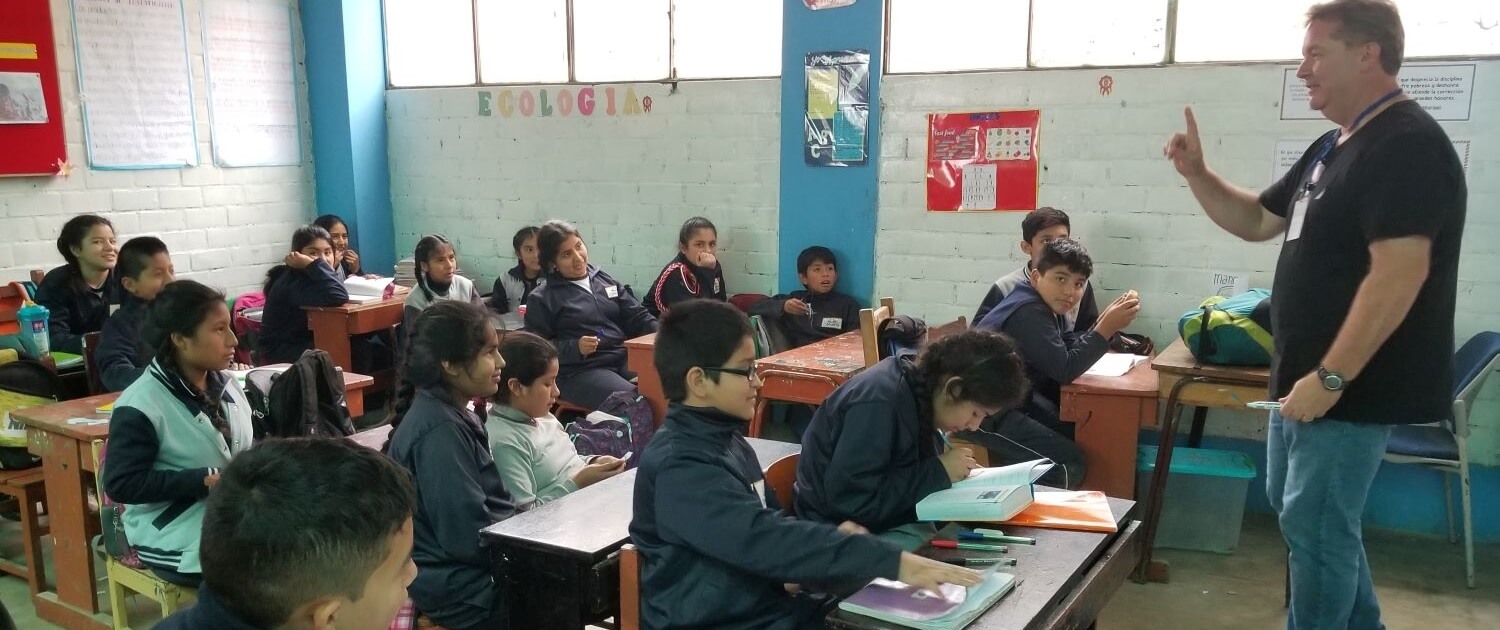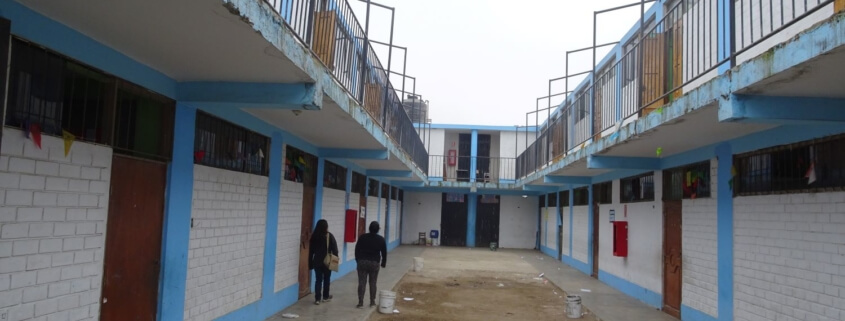Building Student Capacity in Peru
Unlike in many Western nations, the most pressing issues students in Peru confront are not which career to pursue or lack of motivation. Rather, as in many struggling communities worldwide, a deficient basic education and lack of financial resources to pay for tuition curtails the prospects of all but the most prosperous students. For this post, Peru Country Manager Daniel Salazar examines low-income students’ educational aspirations through testimonies from students and alumni from Sagrada Familia, the children’s community Global Volunteers serves in Peru.
Problems With Basic Education
The Program for International Student Assessment (PISA) study, organized by the Organization for Economic Cooperation and Development (OECD), measures academic performance of 15-year-olds worldwide on math, science, and reading. In the last PISA study carried in 78 countries during 2018-2019, Peru showed some of the worst academic performance worldwide. Those weren’t particularly bad years for Peruvian basic education though: in 2012, Peru ranked worst in the world. In plain terms this means that by the time they graduate high school, on average, most Peruvian children in private schools barely comprehend what they read, can only do simple mathematical operations, and have difficulty explaining familiar scientific lessons.

The situation is much worse in public schools, with extremely low budgets, unqualified, underpaid or demotivated personnel, and deficient infrastructure. As an example, it’s not uncommon in Peru to find public schools literally without a roof, electricity, or running water. This explains why in a country where the income per person is about $450, around 30% of children attend private schools. In the U.S., where the income is twelve times greater, the percentage of children who attend private school is only ten percent. These numbers don’t show that Peruvians have more disposable income or that they care more about the education of their children than their American counterparts. Rather, they show that Peruvians know that their public schools in general offer such low-quality education that they are willing to make huge financial sacrifices so that their children can get a chance at a decent education.

Improvements in Higher Education
Thankfully, Peruvian universities perform better. In the last QS World University Rankings, Peru listed eight universities, including two public universities. (On a side note, we can proudly say that one of the latter, Universidad Nacional Agraria La Molina, is a long-time Global Volunteers’ community partner.) Another good thing about universities in Peru is that, unlike in the U.S., public universities don’t charge tuition. Unfortunately, this leads to a big problem.
Only a handful of public universities have a good reputation for quality education, and this is naturally where most kids from low-income families want to study. In 2020, the top five public universities offered one opening for every 70 graduating students. To filter admission, these universities offer admission tests that are quite difficult. Keeping in mind the low quality of education offered in high school, the average student must prepare for about three years after graduating from high school to get a chance at being admitted to one of these universities.

To bridge the gap between high school and university, the private sector has come up with a solution: Specialized admission test preparation schools (“academia” in Spanish). Academias are no fancy private schools though. They regularly fit 40-60 students in classrooms that should fit a third of that. Classrooms offer no personal space or much safety in case of emergency. Classes usually are Monday to Saturday from 8am to 5pm, with only one-hour breaks. And students are expected to work on homework and prepare for weekly tests once they get home. There’s a lot of pressure and teachers demand lots from their students. But that’s what students are looking for, and families are willing to pay the reasonable fees charged ($50-$150 per month) for a chance for their children to be admitted at a university.
Still, academias remain financially out of reach for poor families, and some students themselves don’t feel capable of succeeding in them. And there are other students whose dream careers don’t belong in universities but in technical schools. Finally, there are those who choose to be day workers or small entrepreneurs rather than go to college.

Sagrada Familia’s Response
Since public and private grants or scholarship are rather scarce, higher education in Peru is particularly tough for those who lack the resources. That’s why it’s encouraging to see the efforts of Miguel Rodríguez, Sagrada Familia founder and director. Thirty years ago, he rescued more than 40 children from the streets. After selling his house in Peru’s most upscale district to care for them in the middle of Lima’s desert, he built a school for them. Now that school offers meals and education to over 1,300 students. Also, without private or public funding, he provides food, shelter, healthcare, and education to more than 200 resident children. The parents or guardians of these children, who usually come from remote villages in the Peruvian jungle or mountains, know that their children have little to no chance of pursing higher education if they attend the public schools available to them. They ask Miguel for a chance for their children at a decent basic education and maybe even college someday. Miguel never says no.
The impact of Miguel’s work in education can be seen in the lives of Sagrada Familia alumni and current students. Alexander Ramos, a resident at Sagrada Familia who came from a village in the Peruvian jungle shared with us words that apply to millions of children in Peru: “[Before coming to Sagrada Familia] one of my dreams was to go to college, to set foot on a college campus. I always wondered how this could be possible. I always worried about what I would do after graduating high school.” Fortunately, Miguel was able to get a few scholarships from a private university in Lima.

As soon as Miguel presented this opportunity to the resident children at Sagrada Familia, Alexander immediately took advantage of it. “So, what was difficult for me suddenly became feasible. For me this was the best opportunity I’ve had in my life,” Alexander shared. But Alexander’s is only one of hundreds of lives Miguel has changed. Liz Díaz, a Sagrada Familia alumni and now professional English teacher has a similar story.
After being rescued from selling candy on the streets when she was a ten-year-old girl, as a high school student Liz had no major academic aspirations. But “Miguel told me about my potential and made me see that I was bright and had a great future ahead if I took advantage of the opportunities in front of me,” Liz recalled. Over time, Miguel convinced Liz of her abilities and responsibilities. “I wasn’t always cooperative,” Liz laughed. “But, from that point on, I felt very privileged and loved.” So, I started applying myself, and eventually realized that I actually liked learning. I did very well in school and graduated with honors.” Eventually, Liz studied English in a U.S. college and also graduated with a tourism management degree in Peru.

The Role of Volunteers
Seeing low-income youth in Peru striving to get access to higher education inspires us. Hearing stories like Alexander’s and Liz’s fills our hearts. They were made possible thanks to Miguel’s promise to enable children to obtain an education despite their circumstances. But he didn’t do it alone. Volunteers have played a part in making these dreams come true, as we can see from Liz’ words: “My success is not only a product of Miguel’s work, but also of the many volunteers who continue to serve our community. They made a huge impact in my life. They saw great potential in me when I was not able to see it. The best part is that they encouraged and helped me improve, and they feel part of my life.”
“My success is not only a product of Miguel’s work, but also of the many volunteers who continue to serve our community. They made a huge impact in my life. They saw great potential in me when I was not able to see it. The best part is that they encouraged and helped me improve, and they feel part of my life.”
Liz Díaz
Miguel himself speaks of the importance of volunteers’ work at Sagrada Familia improving school infrastructure, mentoring children, and teaching English. As an example, he points out that “Global Volunteers helped construct part of our Pre-K, supplying not only resources but manpower to help the foremen. Further, he emphasized that volunteers’ contribution to school environments isn’t only material. “The presence of volunteers is especially important because it generates many expectations for the students,” Miguel asserted. “They show the way to continue dreaming about what one wants. Knowing that dreams can come true and that we can have good lives is made possible through the successful people who come here and give us a lot of strength.”

Miguel also explains the importance of volunteers’ work for a wholistic education: “Their role is very important, especially in the educational field as well as the development of values. They are examples of solidarity, respect, and tolerance. Their accompaniment is essential in the development of each minor.” Similarly, Vilma, a recent graduate from Sagrada Familia, explains how volunteers’ impact in education goes beyond the academic: “volunteers display some traits that are good for us. For instance, they are more punctual. Kids see that. We can hear that we must be punctual, that we must be more organized. But kids copy what they see.”
“The presence of volunteers is especially important because it generates many expectations for the students. They show the way to continue dreaming about what one wants. Knowing that dreams can come true and that we can have good lives is made possible through the successful people who come here and give us a lot of strength.”
Miguel Rodríguez
Vilma is now an interior design student and recently started an internship at an interior design firm. She also explains the impact of volunteers’ work from the children’s perspective: “the kids at Sagrada Familia know that the Global Volunteers are giving away their time to be with us.” Rosa, a current resident at Sagrada, agrees with Vilma and shares how volunteers have helped her in her studies: “They have helped me a lot, especially in English. I have had great experiences with the volunteers who have come. I like them. They help us academically because they come to be with us and are really patient with us when they teach us. They have always treated us nicely. I believe a person learns more that way.”
Finally, Liz explains how now volunteers’ encouragement makes a difference: “Global Volunteers continue to help my brothers and sisters. Each one of them, like grains of sand on a beach, make a difference in every word, critique, and encouragement. All of that helps us to not give up.” To help the Sagrada Familia children achieve their professional dreams we need many more grains of sand. Will you join Miguel in his work to make these dreams come true? Learn more about our Peru Service Program here.
You may also like:




Leave a Reply
Want to join the discussion?Feel free to contribute!